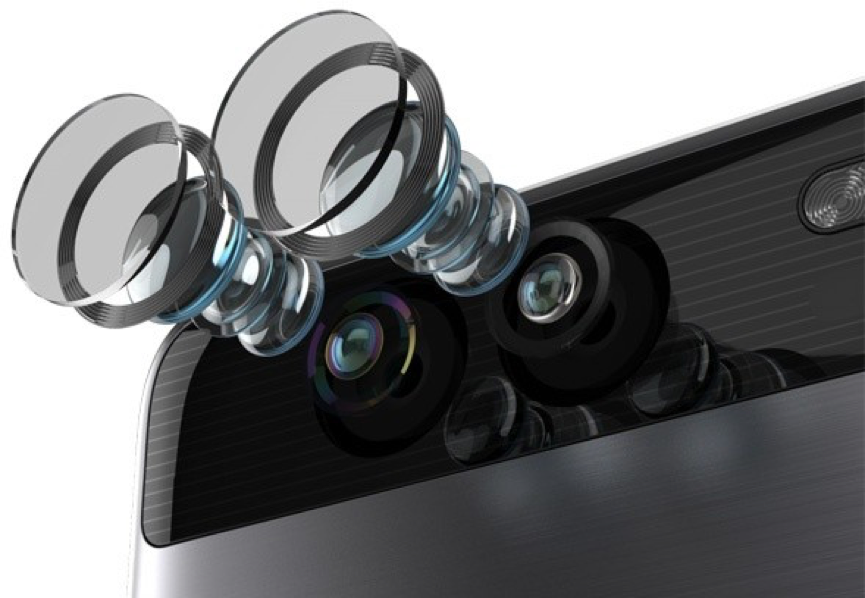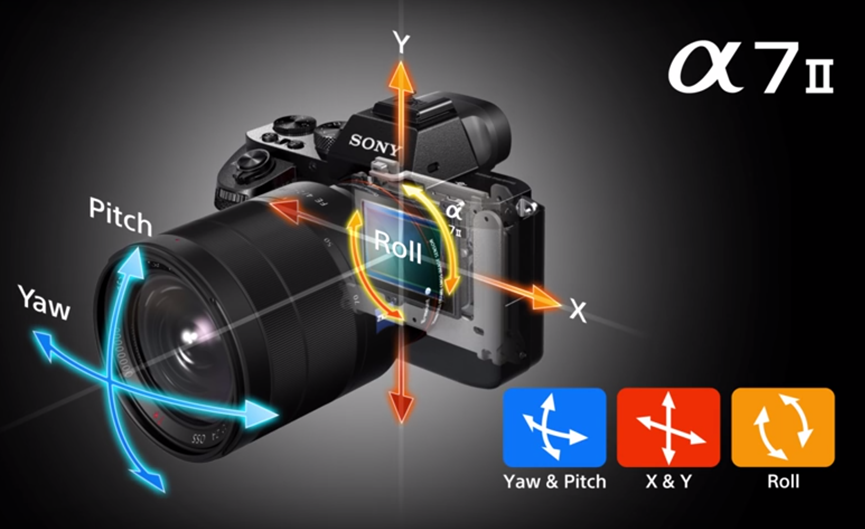Samsung, Apple with Dual OIS Now, But When for “DSLR-Level”?

Samsung and Apple now are finally with dual OIS! Right after Samsung acclaimed its Note 8 as “the first smart phone in the world to feature dual camera with OIS”, Apple announced its iPhone X with the same feature, making up the regret in iPhone 7 plus last year.
Why is this big bang feature of the two mobile phone giants highly anticipated by so many? As is known to all, photography has been playing a key role in influencing cellphone consumers’ decision making and is the main battle field to all cellphone manufactures. To offer customers “DSLR-level” photo-taking experience, they have been incessantly seeking different kinds of black technologies. Among them, dual camera and optical image stabilization have become must-haves for the cellphone brands.
Dual Camera with Dual OIS—a Big Challenge of the Industry
Yet there has been no mobile phone with true dual OIS before the launch of Samsung Note 8 in this August. To combine the dual camera with dual OIS in one cellphone boasts huge challenge in the industry. One common solution is applying OIS in the primary camera only, or totally giving up OIS. The fundamental reason is: as the current OIS solution—VCM (voice coil motor) is realized through moving the lens, the coil will unavoidably produce magnetic field and result in mutual interferences of the two cameras, thus some space must be reserved in between to avoid it. And that’s why the size of dual camera with OIS is much larger than that of one. Recent years, many manufactures have attempted to address the issue through solutions like putting magnet shield or flashlight in-between the two cameras, however, the core problem is not resolved, and an increase of the size and cost is also inevitable.
Samsung Note 8 and iPhone X, with dual OIS, will absolutely bring cellphone users’ photo-taking experience to a much higher level. However, to realize the “full-frame DSLR-level experience”, it’s more than getting both two cameras with OIS, but making some fundamental upgrading of anti-shaking technology:
Light means all for taking a photo. When there is sufficient light, most of the cell phones will be able to have good-quality photos. With an aperture of F1.7~F2.4, it would be very easy for the sensor to gain enough light. However, in cases of low light environment or at night, a longer exposure time is needed for the sensor so we could have clear images. If our hand happens to shake in the Pitch (rotation around X), Yaw (rotation around Y), Roll (rotation around Z), X, Y 5-dimensional space at this time, the image may become blurry. While to increase ISO could shorten the exposure time, it will result in higher noise in photos. Then, how can we make sure we could get clear and sharp photos even in different unfavorable situation? OIS is the most effective solution. And if we have two cameras, then it is best we have OIS for both of the two.
Professional-Level Overall 5-Axis Anti Shake—the Ultimate OIS Solution
The current VCM OIS, while realizing image stabilization by moving lens on the plane of X-Y direction, can only ensure pitch and yaw image stabilization, not including that of roll. The fact is that shaking could come arbitrarily in any axis and might not be controlled by people, hence an all-round anti-shaking—pitch, yaw, roll, X and Y is needed. This has actually been realized by renowned professional camera brand—by moving the image sensor, instead of lens, high-quality pictures could also be taken even at shaking or low-light environment. That’s why we believe, to apply the same technology and have 5-axis OIS is not only feasible, but also the ultimate imaging goal the cellphone brands shall realize.
Note: The 5-axis OIS we are referring here is an overall 5-axis dimension anti-shaking from Pitch, Yaw, Roll, X, Y; while we see some advertisement to claim using lens movement to perform 5 axis compensation, we suspect this “5-axis” is referring to different 5-axis—Pitch, Yaw, X, Y and counting the AF direction. The roll axis shake is not going to be compensated by lens movement as image remains unchanged by rotating lens!

Pitch, Yaw, Roll, X, Y 5-axis dimension
Picture Source: screenshot from Sony α7 Ⅱ official video release
So here we are introducing MEMS OIS, a solution that ultimately realizes image stabilization from performance, stability and cost, yet 100% compatible with dual camera.
MEMS OIS— the 1st & only Solution for 5-Axis Image Stabilization in Cellphone
MEMS OIS is a MEMS based static actuator sitting underneath the image sensor. Similar to DSLR, it can realize 5-axis optical image stabilization by moving the sensor instead of camera lens.
By moving the image sensor in x-y plane in a very fast and precise way, it could compensate the undesired vibrations that cause image blur while taking a photo, without moving lens. Currently available technologies such as VCM (lens moving OIS) only provide 4-axis compensation, whereas MEMS OIS provides REAL 5-axis compensation, comparable to DSLR.
By moving the image sensor in x-y plane in a very fast and precise way, it could compensate the undesired vibrations that cause image blur while taking a photo, without moving lens. Currently available technologies such as VCM (lens moving OIS) only provide 4-axis compensation, whereas MEMS OIS provides REAL 5-axis compensation, comparable to DSLR.
- 5-axis stabilization: pitch, yaw, roll, X and Y
- 5 x faster
- 100 x lower
- 10 x more precise
- Built-in 2-axis accelerometer
- Compatible with any existing AF, shutter and Zoom actuators
- 3D capture
- Super resolution
MEMS OIS’ Competitive Advantages in Dual Camera
As MEMS OIS is an Electrostatic actuator, it will show distinctive advantages when applied in dual camera:
1. Cameral Module Size.
There is no magnet with MEMS actuator so there is no Electro Magnetic Interference between dual OIS camera when MEMS actuator is used for the dual OIS camera design. Without magnet interference, the standard 8.5 x 8.5 AF VCM can be directly used and no gap will be here, footprint of overall dual OIS camera size much smaller than that adopting dual VCM OIS
2. Avoid signal interference.
While the coil of dual VCM OIS may produce radiating antenna affecting RF of the cellphone, there is no coil with MEMS actuator so no radiating antenna will generated.
3. Power consumption.
The max current in MEMS actuator is only 62uA which is far lower than VCM (100mA) so the power consumption of MEMS OIS will be much lower. What’s more, continuous photo-taking and video mode which have huge power consumption and high requirement of stability can only be supported by EIS (Electronic Image Stabilization) currently. If MEMS OIS is adopted, it will have super fast in-position speed and ultra low power consumption.
4. Image quality assurance.
Without moving the lens, MEMS OIS will bring no loss of image quality regardless the size of the lens, AF VCM or its tilting.
5. Cost control. MEMS actuator volume production is fundamentally semiconductor technology and is highly automated and scalable for mass production with high production yield. Compared to VCM which consists of around 20 components, MEMS actuator cost is much lower in the long run.
Big applause to Samsung and Apple, yet we believe only the true dual 5-axis optical image stabilization is perfect solution for cellphone dual camera, and that “full frame DSLR-level” imaging of cell phone is right around the corner!
About MEMSDrive Inc.
MEMSDrive Inc. is an innovating semiconductor company that develops, manufactures and markets cutting-edge MEMS actuators. Our products target hardware applications in mobile imaging for portable electronics, including smartphones, action camera, wearable devices, VR, drone, automobile, computer vision and more. The MEMSDrive core team all have an average of over 10 years’ experience in design and mass production. With launch of its 1st-gen product MEMS OIS based on the technology of image sensor movement, MEMSDrive will continue to drive higher performance and significantly improve image quality.
Media contact:
Betty Rao
+86-755-83236962-806 +86-18202069031
